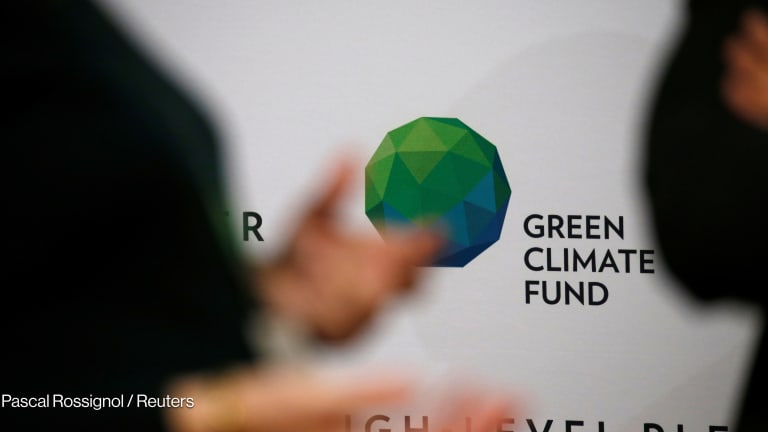
President Joe Biden announced Thursday that the U.S. government will double its public climate finance to lower-income countries by 2024.
Biden made the announcement during the Leaders Summit on Climate, a virtual gathering of 40 heads of state and other world leaders that the White House is hosting to demonstrate its intended return to climate leadership. The public finance pledge came as part of a new U.S. international climate finance plan, which the administration also released Thursday, intended to provide “a strategic vision of international climate finance with a 2025 horizon.”
“Our shared goal of mobilizing $100 billion per year in developing countries is critical,” Biden said, referring to an agreement made at the United Nations Climate Change Conference in 2009.
“We need to ensure that the financing will be there, both public and private, to meet the moment on climate change and to help us seize the opportunity for good jobs, strong economies, and a more secure world,” Biden said.
The commitment to doubling climate finance in the next three years takes funding levels from the second half of former President Barack Obama’s administration as its baseline. However, the plan does not specify what the level of financing was at that time.
Leonardo Martinez-Diaz, a climate expert working with the administration, took to Twitter to clarify. He wrote that during fiscal years 2013 to 2016, “total U.S. international public climate finance averaged around $2.8 billion a year, with around $500 million of this going towards adaptation.”
This implies that doubling by 2024 would amount to roughly $5.7 billion per year, concluded Joe Thwaites, an associate with the World Resources Institute.
In a statement, Thwaites noted that since the United States was mostly absent from the international climate finance arena for the past four years under former President Donald Trump, it lags behind what many other high-income countries have put forward.
“In this time many other developed countries already doubled their climate finance, and some have committed to doubling again before 2025. In this light, Biden’s commitment to doubling its public climate finance by 2024 compared to a 2013-2016 baseline is not particularly ambitious,” he said.
Biden added that within the international climate finance portfolio, the U.S. will plan to triple the amount of funding for climate change adaptation — a set of activities that have often been harder to finance than carbon mitigation. Based on those same numbers, the amount for adaptation would be $1.5 billion per year.
“I think that’s really good news,” said Bill O’Keefe, an executive vice president at Catholic Relief Services, calling the adaptation increase a “surprise.”
“The moral responsibility to assist those who did not cause this problem to adapt is very serious,” he said, noting that the U.S. Agency for International Development’s climate adaptation portfolio should see a boost.
The new climate finance plan — the first that the country has ever produced — outlines what role various U.S. federal agencies will play and what actions they will take in the next few years.
The U.S. International Development Finance Corp. has sought to be out in front. On Thursday, DFC announced that its portfolio would get to net-zero carbon emissions by 2040, which is earlier than any other development finance institution in a member country of the G-7 or G-20 group of nations.
Sign up for Devex Invested
Our weekly newsletter inside business, finance, and the SDGs.
The plan notes that USAID will release a climate change strategy in early November — coinciding with the next U.N. Climate Change Conference, COP 26, in Scotland.
“The new Strategy will require the entire Agency to consider climate change impacts in all of its programming and encourage all sectors to help countries adapt to and mitigate against climate change,” it reads, adding that particular attention will be paid to “the transition away from fossil fuels and the integrity of the renewable energy supply chain.”
The Millennium Challenge Corp. will also release a new climate strategy and “aims to have more than 50% of its program funding go to climate-related investments over the next five years,” the plan reads.
The U.S. Treasury Department will put pressure on the multilateral development banks where the U.S. is a member to increase their climate finance targets and policies. The plan notes that in the shorter term, the administration will focus on getting regional development banks to boost their climate finance targets.









